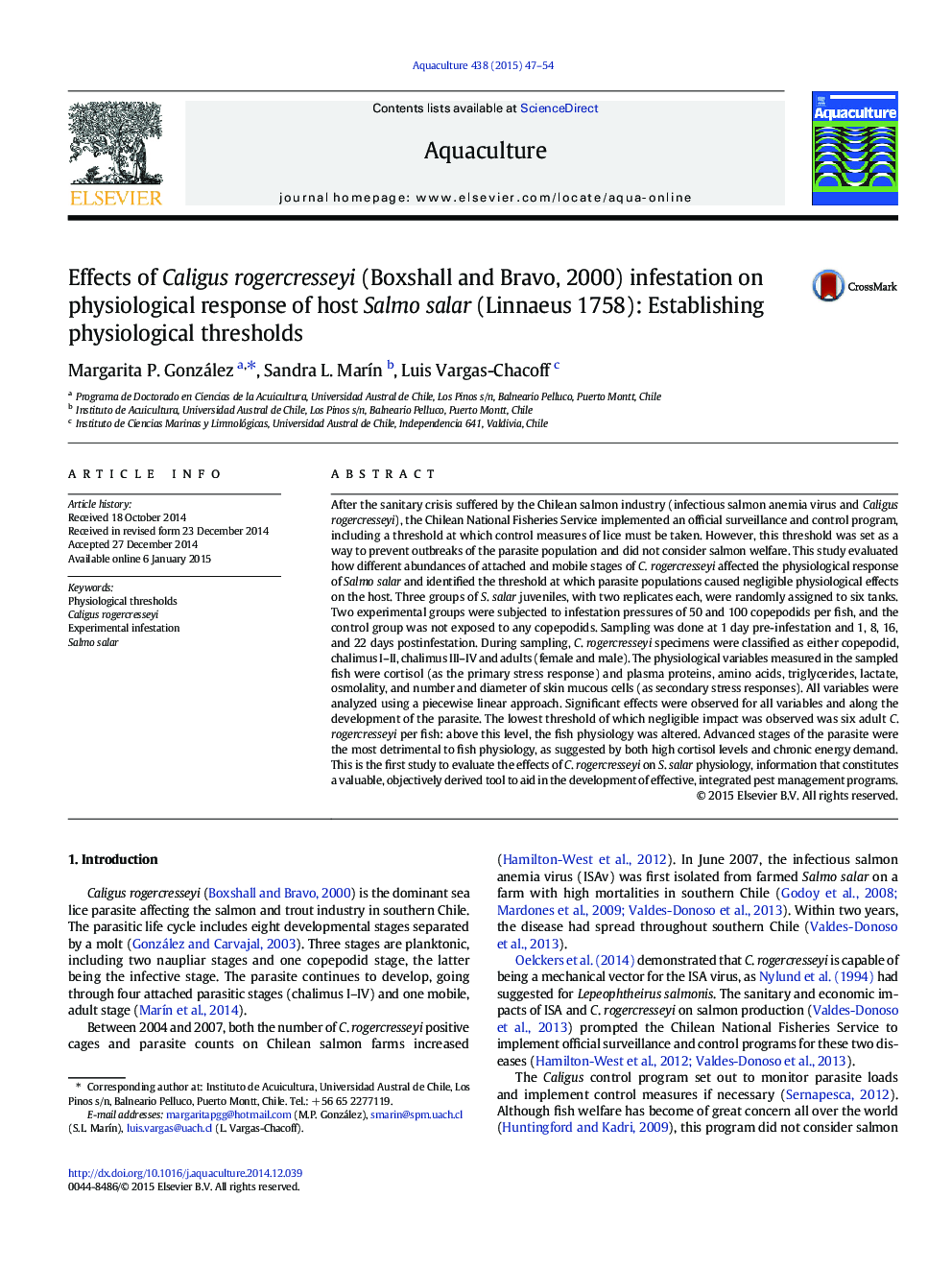| کد مقاله | کد نشریه | سال انتشار | مقاله انگلیسی | نسخه تمام متن |
|---|---|---|---|---|
| 2421639 | 1552849 | 2015 | 8 صفحه PDF | دانلود رایگان |

• This is the first study of how Caligus rogercresseyi affects the physiology of Salmo salar.
• This information is highly relevant for integrated pest management programs.
• Six or more lice can compromise S. salar welfare.
• S. salar can use metabolic reorganization as a mechanism for coping with C. rogercresseyi infestations.
After the sanitary crisis suffered by the Chilean salmon industry (infectious salmon anemia virus and Caligus rogercresseyi), the Chilean National Fisheries Service implemented an official surveillance and control program, including a threshold at which control measures of lice must be taken. However, this threshold was set as a way to prevent outbreaks of the parasite population and did not consider salmon welfare. This study evaluated how different abundances of attached and mobile stages of C. rogercresseyi affected the physiological response of Salmo salar and identified the threshold at which parasite populations caused negligible physiological effects on the host. Three groups of S. salar juveniles, with two replicates each, were randomly assigned to six tanks. Two experimental groups were subjected to infestation pressures of 50 and 100 copepodids per fish, and the control group was not exposed to any copepodids. Sampling was done at 1 day pre-infestation and 1, 8, 16, and 22 days postinfestation. During sampling, C. rogercresseyi specimens were classified as either copepodid, chalimus I–II, chalimus III–IV and adults (female and male). The physiological variables measured in the sampled fish were cortisol (as the primary stress response) and plasma proteins, amino acids, triglycerides, lactate, osmolality, and number and diameter of skin mucous cells (as secondary stress responses). All variables were analyzed using a piecewise linear approach. Significant effects were observed for all variables and along the development of the parasite. The lowest threshold of which negligible impact was observed was six adult C. rogercresseyi per fish: above this level, the fish physiology was altered. Advanced stages of the parasite were the most detrimental to fish physiology, as suggested by both high cortisol levels and chronic energy demand. This is the first study to evaluate the effects of C. rogercresseyi on S. salar physiology, information that constitutes a valuable, objectively derived tool to aid in the development of effective, integrated pest management programs.
Journal: Aquaculture - Volume 438, 1 March 2015, Pages 47–54